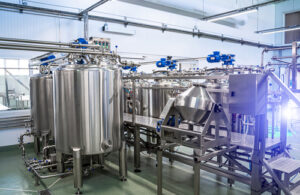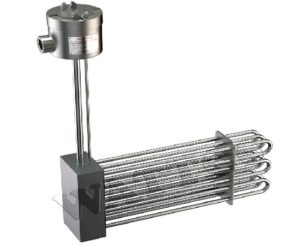Food Processing: 5 Uses of Immersion Heaters
Last updated on August 31st, 2023 at 07:35 pm
Food processing is one of the most essential yet delicate industries globally. For the health, safety, and wellbeing of the masses, food processing needs to be meticulous.
With that said, many processes in the food industry require suitable heating and appropriate units to ensure adequate heating. This post will highlight commercial immersion heaters and their uses in the food processing industry.
Importance of Immersion Heaters in the Food Industry
 Immersion heaters are a go-to choice for various applications in the food industry. They’re powerfully efficient at heating and maintaining the temperature of various fluids.
Immersion heaters are a go-to choice for various applications in the food industry. They’re powerfully efficient at heating and maintaining the temperature of various fluids.
Whether it’s water, oil, or other liquids, an immersion heater can ensure cooking fluids remain at their most appropriate state. Generally, you can find three types of immersion heaters used in the food industry.
Screw Plug Heaters
A screw plug heater consists of long, tubular-shaped heating elements. Food industry workers typically use these energy-efficient heaters to heat chemicals and fluids directly.
Flanged Heaters
A flanged heater contains U-shaped tubes that extend to the base of the heater. Their construction makes them suitable for high-pressure vessels and food processing that require the use of these vessels.
Over-the-Side Immersion Heaters
 An over-the-side immersion heater fits on the side of a vessel that can’t have a heater submerged in it. These units commonly get used in heating systems that rely on more vessels than just a tank.
An over-the-side immersion heater fits on the side of a vessel that can’t have a heater submerged in it. These units commonly get used in heating systems that rely on more vessels than just a tank.
For example, you can find an over-the-side immersion heater to heat a fluid that’s not stored directly in a vessel but will get transferred to another.
Five Uses of Immersion Heaters in Food Processing
The food industry and its associated food processing sectors are broad, requiring their own methodologies. That can make choosing an appropriate heater difficult for management. An immersion heater can accommodate many of those processes, hence why it’s so common at food processing facilities. With that said, here’s a look at five uses of commercial immersion heaters.
Cooking
Workers often use immersion heaters to keep cooking oil hot for general cooking. Of course, different cooking oils react differently when subjected to high temperatures, but immersion heaters are versatile enough to heat various types of cooking oil. In addition, immersion heaters can heat syrups, honey, molasses, and other common fluids used for cooking.
Pasteurization
The pasteurization process is a vital aspect of food preparation. The most notable use of pasteurization is for milk and cheesemaking. Both processes eliminate pathogenic bacteria and require precise heating to facilitate this sterilization. Immersion heaters are highly effective at
maintaining the correct temperatures thanks to their design and heating mechanisms.
Cleaning
Food processing plants, namely meat, and poultry plants, need hot water on demand for sanitization. It’s well established that hot water is a potent microbial killer. An immersion heater helps maintain water at high temperatures at all times so that its available for sanitization.
CIP (Cleaning in Process)
Clean-in-place (CIP) is an automated method for cleaning the interiors of pipes, filters, vessels, and other industrial equipment. CIP involves the use of chemical action, turbulent flow, and heat. When it comes to generating the latter, an immersion heater helps ensure high temperatures to sustain the cleaning process.
Low Sodium Treatment of Fruits and Vegetables
Fruits and vegetables undergo thermal processing to help destroy microbes and balance enzyme activity. They also undergo processes to gelatinize starch or denature proteins as well. All of this requires substantial heating. An immersion heater keeps fluid temperatures high to facilitate the demands of thermal processing.
Immersion Heaters Fuel the Food Processing Industry
Immersion heaters have become the gold standard for many processes in the food industry. They’re one of the most versatile types of heaters out there and can fit a variety of vessels (and their fluids) that need heating. They’re also cost-and energy-efficient. Immersion heaters ultimately offer a straightforward solution for heating processes at all stages of food production.
Here at Wattco, we offer the most robust commercial immersion heaters for your food processing needs.
